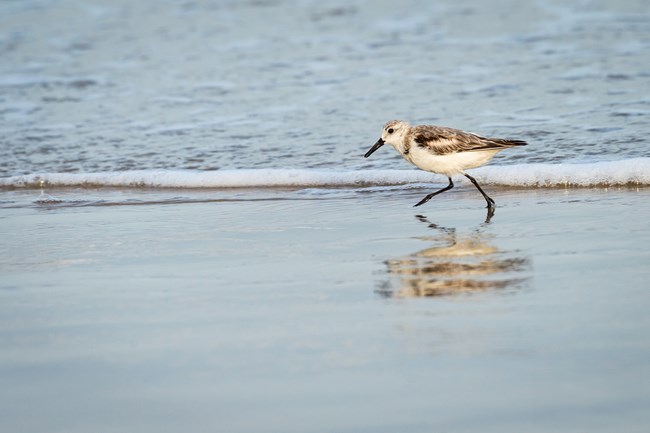
NPS Photo/ Sue Wolfe Anyone Can Go Birding!One of the great things about going birding is that anyone can do it and it requires no special gear. With over 10,000 species of birds worldwide, birds are literally everywhere. From your own backyard to a national park, birding can be a fun activity to get you outside and connected to nature. Here in the park, over 380 species call the national seashore home at some point during the year, making it an ideal place to observe birds and check off new species on your list. While no gear is required to go birding, items such as bird guides, binoculars, and a camera may make your time more worthwhile. Recommended GearBird GuidesSeveral field guide pamphlets and books dedicated to identifying birds in the area are available in the park store. There are also numerous resources available online or on mobile phone apps. BinocularsA set of binoculars can vary greatly in price, magnification, and weight, so it is important to find the right pair for you. Whatever you choose, binoculars will help you get a better view of birds from a distance. CameraFrom the camera on your cell phone in your pocket to an expensive digital camera with a telephoto lens, a camera can be a useful tool to have while birding. You can use it to help document your finds and as a resource to help identify those lesser-known species. More great tips are available on the Birding for Beginners page. 
NPS Photo/ Sue Wolfe Different Habitats Support Different BirdsThe time of year that you visit the park and the habitat area you are in will determine the species of birds you can see. In places along the Laguna Madre and the tidal mudflats, several different types of wading birds can be found. Snowy egrets (Egretta thula), white ibis (Eudocimus albus), and long-billed curlew (Numenius americanus) can be found throughout the year. Species such as the American white pelican (Pelecanus erythrorhynchos) and redhead ducks (Aythya americana) return to the area each winter. On the interior of the island throughout the grasslands, numerous species of songbirds can be found along with a resident family of crested caracaras (Caracara plancus). With the return of winter, sandhill cranes (Antigone canadensis) can be seen foraging in the tall grasses as shallow marshes form from winter rainstorms. Along the sandy beaches of the Gulf of America, brown pelicans (Pelecanus occidentalis) can be seen flying in formation and diving for fish year-round. Birders with a watchful eye may also catch a glimpse of the elusive ruddy turnstone (Arenaria interpres) or red knot (Calidris canutus). Species ListTo obtain a full species list, select "birds" for the category below. Select a Park:Select a Species Category (optional):
Search results will be displayed here.
Other Birding Hotspots in the Local Area
|
Last updated: February 18, 2025
